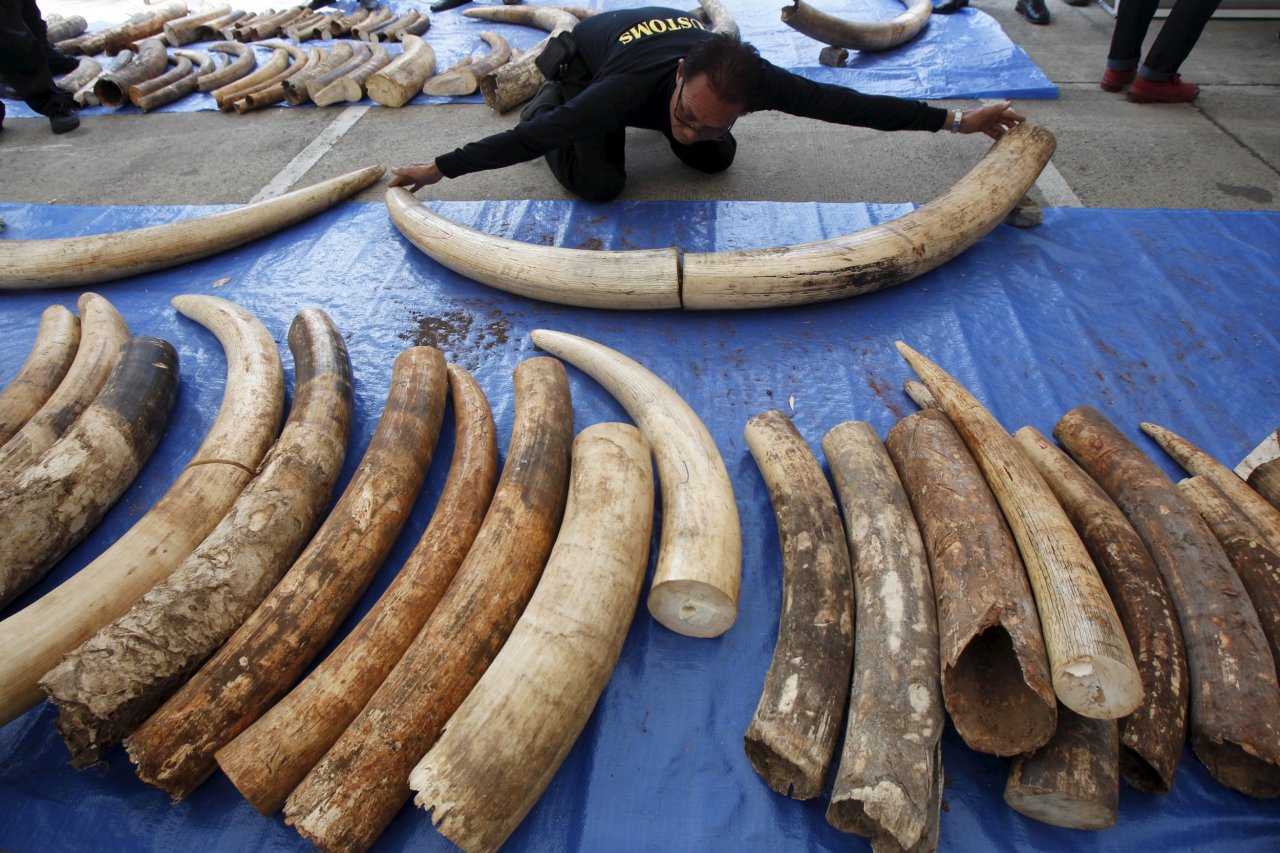
African elephants are in trouble. Poachers kill about 50,000 of the animals every year for their tusks, which are fashioned into ivory trinkets that collectively fetch several billion dollars. This greatly imperils the future of the world's largest land mammal. Only around 430,000 are left, and around 10 percent are killed off annually.
But policing is tough. How do you protect an animal found across enormous expanses of land in sub-Saharan Africa?
New research shows that the task may not be as overwhelming as it sounds. Sam Wasser from the Center for Conservation Biology at the University of Washington and colleagues examined DNA from tusks seized by customs officials around the world from 1996 to 2014. They then matched those with a map of elephant genes, which they constructed by taking 1,500 DNA samples from elephants across 29 African countries.
This allowed them to determine where the seized ivory came from, as they describe in a study published June 18 in the journal Science. To their surprise, they found that poaching appears to be concentrated in two areas. For forest elephants, poaching is centered on the so-called TRIDOM (Tri-National Dja-Odzala-Minkebe) protected ecosystem, which spans northeast Gabon, northwest Democratic Republic of Congo and southeast Cameroon, Wasser says. For savannah elephants, which live on the eastern and southern plains of Africa, Tanzania is the primary hot spot for poaching and the more important of the two, he adds. The discovery "means we can now target these areas" rather than spreading resources thin over a wider area, Wasser says.
Indeed, in Tanzania, the population of elephants has declined by 60 percent in the past five years. Absurdly, the government claimed earlier this month that much of the drop could be explained by "migration."
"Tanzania really is ground zero for poaching and trafficking," says Crawford Allan, senior director with the World Wildlife Fund's wildlife trade monitoring network, called TRAFFIC. The results of this recent study suggest that there is a relatively high level of corruption in that country, Wasser says, and that those in the international community seeking to protect elephants should vocally demand change from Tanzania's government. Perhaps, he adds, they should consider withholding aid to the country until certain conditions are met.
Foreign money could also help spur change in other ways. Lazaro Nyalandu, Tanzania's minister of natural resources and tourism, recently said in a statement that "elephants are at the top of the 'wish list' for many tourists who come to this country, and tourism generates over 17 percent of our gross domestic product." And in fact, the ministry, along with environmental groups WildAid and the African Wildlife Foundation, just launched a public awareness campaign to inform the public about the poaching "crisis" facing the country.
About the writer
Douglas Main is a journalist who lives in New York City and whose writing has appeared in the New York ... Read more














